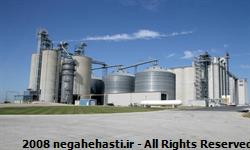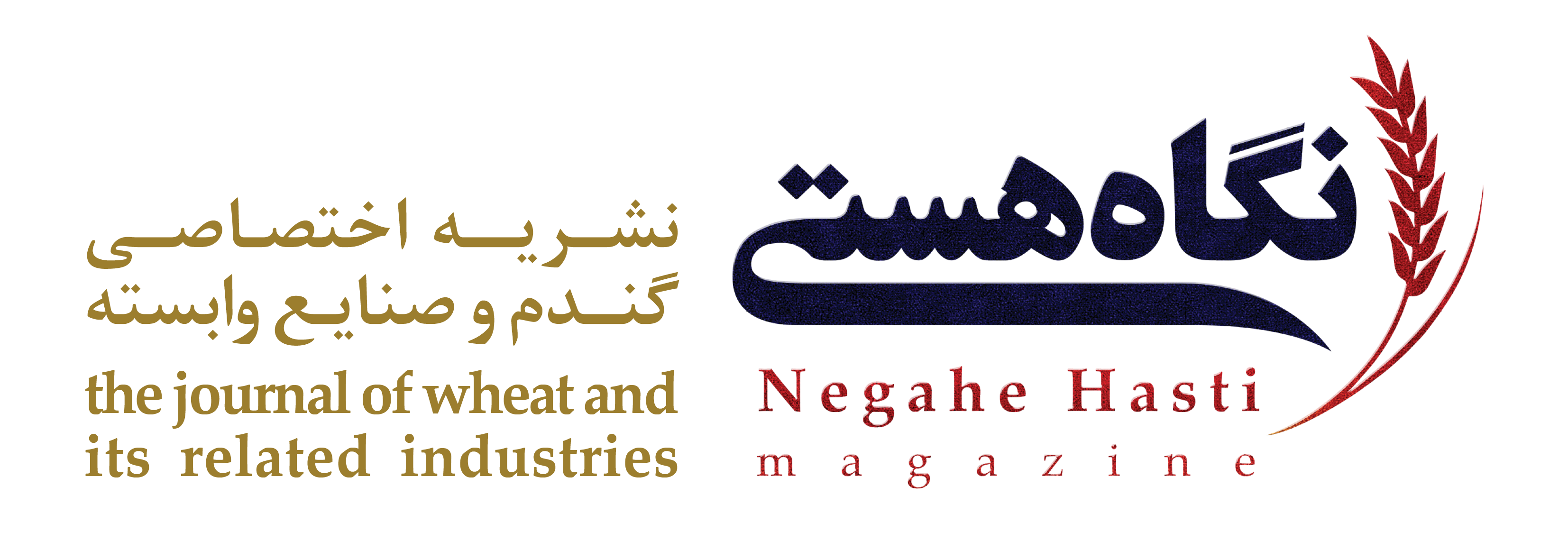![]() ارسال به دوست
ارسال به دوست  نسخه چاپي
نسخه چاپي

Mills are becoming autonomous
The principle and processes of the “mill of the future” are not clearly distinct from those used in mills today. But they do take up less space, are more energy efficient and operate increasingly more autonomously.
There is a long history behind milling grains. We know that hunters and gatherers were already using stones or mortars for crushing grains. With the increasing division of labor, the occupation of miller to process wheat, rye or spelt came into being. During the Middle Ages, the profession of miller in Europe came to be known as disreputable and dishonest because of all the possibilities for cheating. But sometime in the 16th century, Reich law decreed that it was an “honorable” and “guild-worthy” profession. CHALLENGES FOR MILLERS CHANGING MARKETS FOR RAW MATERIALS Up until recently, there were central export organizations to ensure standardized and clearly defined product qualities in the countries that export grain. However, recently, the supply chain on the grain market has become very fragmented. This has an advantage for individual millers in that it allows their needs for grains to be freely covered on a large market. But, the reverse side to this is that there are many different qualities of grain to deal with. If a miller wants to provide consistent flour quality as years go by, he needs to purchase cleverly and mix various raw materials together. Flour made from the same batch of grain is almost only possible for regional flour specifications or organic products. In addition, there is a global overcapacity of 30-40% in the milling industry, which puts pressure on price competitiveness. Of course, this overcapacity often means mills ‘in the wrong place’ and/or in poor condition. This explains why demand for new mills is holding steady. MONITORING PROCESSES AND PRODUCTS BUILDING MILLS IS STILL AN ADVENTURE Mercury MES enables a seamless exchange of information throughout the systems involved in the production process. Data availability and real-time feedback allow smart decision making, increasing your milling performance and productivity. We at Bühler have known how to build a mill for 150 years. But difficulties can arise anywhere between the permitting phase, in particular, and the construction of the building’s shell and infrastructure by local contractors through to the plant installation and commissioning. For Bühler, with all its professionalism, building a mill ‘anywhere in the world’ is always an adventure because of the local circumstances. BÜHLER MILL E3 At Bühler, the next generation of mills is called “Mill E3”. This is a building shell made of conventional parts which is only three stories high and has correspondingly less building volume. This lowers costs for infrastructure. The actual mill itself is assembled in the finished building shell using pre-installed and tested modules which significantly reduces time and material for installation. These modules are built very compactly and comprise mostly new, energy-saving plant components. Overall, a new Mill E3 can be built in a very short time, it requires less space and has a more economical total cost. And, thanks to energy-saving technology, it consumes significantly less energy per ton of processed wheat. Just the energy for the grinding alone is reduced by ten percent. The energy savings for the entire mill is seven to ten percent – and, it must be noted, keeping the same parameters for yield and product quality. ALTERNATIVES TO GRINDING? SELF-OPTIMIZING For us mill builders, this means that we need to continue developing today’s milling technology to make it highly efficient, compact, economical and easy to maintain and to create mills that can monitor and optimize the process themselves. But experienced millers will never be redundant, even in such a modern mill. The miller will be the one who needs to determine the efficiency of production using his abilities and knowledge. And our plants will be there to offer increasingly resourceful support for his tasks.
Today, millers around the world, whether their mills are large or small, are important suppliers for many different food producers – from the neighborhood bakery to international food corporations. At Bühler, we have routine contact with our customers. We hear from mill operators about the changes that have taken place in their area of work over the past years, and how these changes affect their work and their needs in terms of mill expansion. There are two increasingly big challenges which are shared by our customers: Businesses that process the flour – are demanding increasingly higher flour quality and guaranteed consistency within narrow parameters. Along with the growing product diversity, based on desires by consumers, goes the increasing demand for special flours. This confronts mill operators with the challenge of offering a constantly expanding range of flour products while maintaining consistent quality and keeping prices competitive.
Our customers also report changes on the side of their suppliers. International grain markets have significantly changed in the past 20 years.
These changes and trends in the milling industry have a direct effect on planning and constructing new mills. To manufacture flours with consistent quality from varying raw materials – in addition to the quality of the plant components – a permanent monitoring of processes and products is essential. A growing number of sensors and software are assisting or even replacing manual control by the miller and help to guarantee as well as verify permanent quality. Traceability for every single processing unit all the way back to the wheat field is possible in modern mills. The changed customer demands encountered by flour mills also entails additional plants for the storage of diverse flours and the blending needed for the desired products. Ultimately, it is lawmakers at all levels that ensure higher requirements for sanitation and food safety.
The challenges in building a new mill have also changed recently. The biggest obstacle is not the actual planning of the mill. It is dealing with local and national officials that can lead to complications and/or delays in the permitting process for new plants. Although it is the customer’s responsibility to obtain the permits, Bühler is directly involved in the process as the project manager and as a supplier of the necessary equipment.
We notice: Construction of a new flour mill is oriented to ecological and economical features. Customer requirements for mills must be taken into consideration just as much as the many legal regulations which demand compliance. In addition, increasing competition exerts pressure to improve product quality while lowering production costs. The next generation of mills needs to enable production of market-conform flours at the lowest cost possible.
The basic principle of grinding has stayed the same for thousands of years: Kernels of grain are crushed into powder between two hard surfaces. Is it really possible that humans, as innovative as they are, have not yet discovered an alternative to grinding? Our researchers have tested alternatives over the past decades and developed them to market maturity. But neither the use of lasers or ultrasound have brought the lab test results even close to the pulverizations methods used today, and they were certainly not superior. Even a chemical approach using enzymes to dissolve the bran and crush the endosperm was proven to be less promising.
There is still biotechnology. The biotechnological conversion of wheat directly into bread or pasta is conceivable but still open for implementation. I personally don’t think that consumers are ready to eat such bread or pasta. The trend, in fact, seems to be moving in the opposite direction: Consumers want their bread as a natural product with as few unnatural ingredients as possible.
